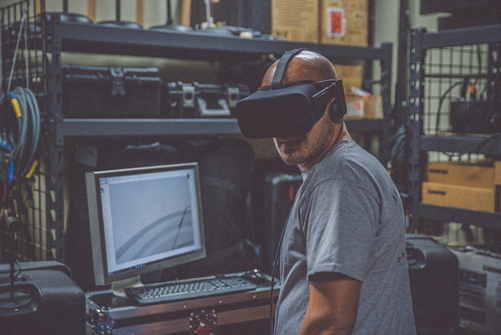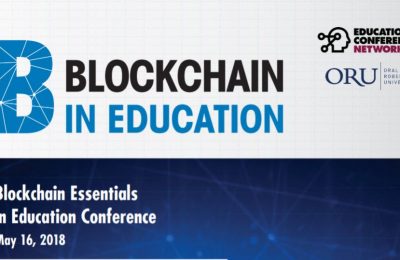EnlightenEd
Data Management Best Practices for 2019

Does your organization have a love-hate relationship with data?
On the one hand, data makes the world go ‘round. It’s what enables organizations to do their thing…to grow…to improve. It guides decisions and shapes strategies. It illuminates the past and informs the future. It’s vital to literally every aspect of business and higher education today.
On the other hand…there’s so much of it! It’s overwhelming. Confusing. Sometimes contradictory. It makes for tons of extra work, and creates tech and procedural headaches left and right.
So what’s the best way to handle this crucial but frustrating resource?
With 2019 right around the corner, it’s time to take a new approach to data management.
Addressing data management piecemeal, or waiting to make changes till problems arise, just isn’t going to cut it anymore. You think we’ve got a lot of data to deal with now? Just wait till we hit the 2020s! 2019 is the perfect time to proactively get all your data ducks in a row, so you’re ready for whatever the new decade brings. So let’s take a look at the 3 steps that will stand you in good stead for the future.
1 – Create a data management strategy.
This first step is vital. Take a step back from the details that are so easy to get lost in, and look at the big picture. You need an overarching data management strategy. From collection to integration to quality assurance to distribution to storage to security…every single aspect of your data management procedures should be intentional and aligned with a single strategy in mind. Leave room for the future in your strategy as well – make sure your plan includes some agility for incorporating any new data feeds or new tech that may become important tools a few years from now.
2 – Automate data integration.
Does every single one of your apps and programs automatically communicate and share data with each of the others? Or are you stuck cross-referencing data manually, or looking things up in one system to manually add to another? With new data constantly coming at us in such large quantities, it’s simply becoming impossible to keep up without an automated integration solution.
N2N’s Illuminate platform gives you a simple, elegant way to integrate all your data feeds and systems in minutes, without any coding. And as a bonus, it leaves room for the future as well, making it quick and easy to add new apps to the mix anytime.
3 – Ensure data quality.
How do you know that typos or other confusion during data collection aren’t creating duplicate records or other issues with data quality? Without human eyes on that data to check, you can’t be sure. But who has the resources to handle all of that manually?
N2N’s IDMatch, an add-on module for the Illuminate platform, automates the time-consuming parts of data quality assurance, and then gives users the ability to quickly review potentially problematic records manually using an intuitive interface. Saving time and boosting accuracy in one fell swoop!
So if you’ve got a love-hate thing going on with data, and you’re worried about what 2019 and beyond will bring – call N2N today. We can get you set up with solutions that will get your organization future-ready, and change your relationship with data forever.
More EnlightenEd Entries
EnlightenEd
The Secret To Ensuring Data Quality in Your SIS

On a scale of 1 to 10, how worried are you about the imminent rise of robot overlords?
If you’re at a 9 or a 10, then you may not want to read this blog post. In fact, you may actually want to take up yoga, or maybe cut back on the caffeine or something.
But if you’re at 8 or below, then it should be safe to ask yourself the following questions:
- First of all, how automated is the admissions process at your institution?
Are student applications uploaded directly into your systems without any interventions from staff? Are all of your databases and programs integrated in such a way that data flows between them without the need for manual transfers? Are there bottlenecks because certain steps in the process need to be done by a human – like comparing or verifying huge amounts of data?
- And then secondly, how would you rate the quality of your institution’s data?
Do you know for a fact that there are no duplicate student records in your database? How much of an opening does your admissions process give human error to miss details or make mistakes? Do your current apps and systems have the ability to catch or prevent any such mistakes?
We’re not saying it’s time to surrender to the robots – but we are saying you need to take a good hard look at which parts of your admissions process are most efficiently handled by tech solutions, and which parts truly do require manual human involvement, and then adjust your admissions process accordingly.
Data quality is a crucial aspect of every facet of a higher ed institution’s functioning. But with the massive amounts of student data needing to be checked and processed on an ongoing basis, it would take a massive commitment of resources to handle it all manually. Automated solutions definitely speed up the admissions process, but without human involvement, they don’t have the capacity to prevent certain errors or duplicate records. And the various mash-ups of these two options that university IT departments often attempt simply end up slowing things down or causing more mistakes.
So what’s the answer? A tech solution that handles the time-consuming, nitty-gritty parts of the process, and then hands it off to your humans at critical junctions to make important judgements.
The answer is IDMatch.
IDMatch is a fully-customizable, turnkey, automated solution for higher ed institutions to check student applications against existing student records, in order to eliminate duplicates and filter based on the data of their choosing, and then integrate into their SIS.
Humans call the shots during the initial set-up, when the data fields that student applications will be filtered through are chosen based on an institution’s unique needs. Then IDMatch takes over, comparing new student data to existing student records in your systems, and creating lists of applicants who may be duplicates. At this point, humans take the wheel again, clicking through the intuitive interface to see whether they are in fact doubles or not, and making decisions about how to handle each case. Then, it’s back to IDMatch for the final integration into your SIS.
An add-on module to N2N’s Illuminate API Management Platform, IDMatch also brings with it the capability to seamlessly integrate all your data, in every app, system, and database, and automate its transfer between them.
So if you’re looking for a way to automate as much of the admissions process as possible, but get human eyes on the data to ensure quality – and do so without slowing things down or providing opportunities for mistakes to be made, then give us a call today. The robots are waiting.
Just kidding, just kidding – we humans at N2N would be happy to walk you through a free demo anytime.
More EnlightenEd Entries
EnlightenEd
How IDMatch Is Helping Waubonsee Community College Prevent Duplicate Records

Waubonsee Community College had a problem.
A good problem, but a problem nonetheless.
See, Waubonsee plays an integral role in its community.
Located about 30 miles west of Chicago, it’s a learning hub for many students in the area, providing opportunities to fit just about any young adult’s educational and career goals.
Local high school students take dual credit classes through Waubonsee.
Some students use it as an affordable stepping stone to a 4-year degree.
Others get their Associate’s there and then dive headfirst into their careers.
And still others take a few classes for enrichment, continuing ed, or just for fun.
But a bustling community college means a bustling admissions department – and that’s where the trouble lay.
With so many students applying for different reasons and at different times in their school careers, the number of application submissions can get pretty overwhelming. To complicate matters further, students who took dual credit classes in high school often start the application process from scratch again if they want to take regular college classes at Waubonsee – even though they’re already in the database. And sometimes new students begin an online application, abandon it, and then start over a year or two later from scratch – once again creating multiple records in the database.
Waubonsee needed a way to ensure that, no matter what path a student took through the application process, only one record would be created for each student.
And that wasn’t all.
Illinois’s community college tuition rates are based on whether a student resides within a particular community college district or not. So Waubonsee needed a way to differentiate between student applications from their district, and those from different districts (none of which are based on ZIP codes) – without having to manually go through each one to check.
Together, these two challenges made for a situation that just wasn’t able to be effectively addressed without a tech solution.
Enter N2N’s Illuminate platform, and its innovative new add-on module, IDMatch.
Waubonsee partnered with N2N to automate the process, and hasn’t looked back since.
IDMatch is a fully-customizable, turnkey, automated solution for higher ed institutions to check student applications (or any other student data feed) against existing student records, in order to eliminate duplicates and filter based on the data of their choosing, and then integrate into their SIS.
We worked with Waubonsee to customize the data fields the community college needed to be able to check in order to ensure that no duplicate records were being produced, and students were being charged the correct tuition based on their district of residence.
It wasn’t simply a matter of First Name, Last Name, Social Security Number – this was a much more in-depth approach, including multiple variations and combinations of names and other personal student information in order to definitively prevent duplicate records. We created fields to match by the 1st 3 letters of the First Name and Date of Birth…First and Last Name reversed…Maiden Name and Date of Birth…Residence/District Codes…the list goes on and on.
Since the end of June 2018, when IDMatch was implemented, Waubonsee reports that 64% of student applications uploaded to their system turned out to have duplicate records already in the school database – and Illuminate and IDMatch caught them all, ensuring that no duplicates were created, and preventing confusion for hundreds of students.
64%! Just imagine how long it would have taken to check all those applications manually – and how often human error could have missed a duplicate here and there.
Betty Bechtold, Data Specialist at Waubonsee, shared the following:
“Our registration and records people were super nervous about starting to use IDMatch, but once we got it up and running, they were saying that they had lost all that sleep for nothing! It was a huge relief – beyond what we could have imagined!! We keep discovering little surprises where it goes above and beyond what we were expecting it to. IDMatch is pretty user-intuitive, and the people at N2N bend over backwards to make sure we’re happy with how it’s working. N2N has been so good at working with us to give us exactly what we wanted – the product itself is really, really good, and the customer service might even be better.”
Here at N2N, we’re honored to have the chance to work with schools like Waubonsee. If you’d like to find out how IDMatch can help your higher ed institution, contact us today.
More EnlightenEd Entries
EnlightenEd
The Next Wave of Enterprise Mobile Integration: Wearables

Remember when VR and AR seemed like futuristic fantasies, really only suited for video games and kids’ apps?
Or when smartwatches seemed kinda cool, but not all that useful?
Remember when Google Glass came out to huge fanfare…and then fizzled out soon after?
Unless you’re in certain industries, like medicine or engineering, your perception of wearable tech and the possibilities for its use in the business world have probably been colored by those much-publicized early offerings.
But talk to someone in one of the fields where wearables are rapidly becoming de rigueur, and you’ll get a much different view.
Doctors and med students alike are donning VR goggles and gloves for surgical training using the latest tools and procedures – benefitting both the doctors and the companies manufacturing those tools.
Engineers and architects are able to test out design changes in a VR environment using wearables – and their customers can then in turn take virtual tours and test drives.
Real-time translation earbuds are now available that allow international business meetings to take place seamlessly, without the need for a human translator or bilingual employees. (And yes, this reminded us of science fiction’s universal translators, too – Star Trek, Doctor Who, Hitchhiker’s Guide – take your pick!)
Smart glasses are guiding employees along the most efficient paths in warehouses hands-free, to boost productivity.
Smartwatches and even smart clothing are helping companies monitor employee safety and prevent workplace accidents.
Wearables are not just for consumers anymore.
And the reason is this: Sure, wearables are cool on their own – but what makes them really cool is the fact that they can be used to send and receive enterprise data.
Integrated into your company’s systems, they can boost productivity, speed up and simplify processes, reduce costs due to downtime, and allow your business to fully realize all the advantages of the latest innovations in your industry.
But the key word there is – integrated.
In order to integrate multiple different wearable devices, and all the apps they run, into your enterprise systems and databases, you need APIs created. And to have those APIs custom coded takes time and money.
Many businesses might question whether it’s worth the gains, to have to dedicate so many resources to API development every time a new device or new wearable app needs to be added into the mix – and they’d be right to do so.
That’s where N2N’s Illuminate API Management Platform comes into play.
Illuminate allows enterprises to quickly and easily integrate any mobile or wearable device, along with all its apps, with their existing systems – no coding necessary.
And not only that – it also prepares the way for any future integration needs. Adding innovative new apps, and whatever yet-to-be-developed wearable devices appear down the line, simply becomes a non-issue with Illuminate, because it takes only minutes to build the API you need to connect it with the rest of your apps, devices, and systems.
See, Illuminate doesn’t just integrate your apps.
Illuminate hands you the future.
It’s time to get excited about IT again.
Contact us for more information or a free demo today.
More EnlightenEd Entries
EnlightenEd
N2N Featured in Forbes: Edtech Startup To Release ‘Lifelong Learning Ledger’

N2N was recently featured in a Forbes Brandvoice article from Oracle highlighting the Blockchain-Based ‘Lifelong Learning Ledger’ initiative.
The article details Brandman University and the application of competency based learning toward adult degrees. Using a cloud software platform developed by N2N services, Brandman University has built a set of microservices that enables students to earn a master’s of business administration degree from their mobile phones. As part of this effort, the university has developed a game-based learning microservice, which allows students to take a series of tests to demonstrate their competency. As students pass each test, they are automatically (and progressively) moved to the next level of the program. “Traditional courses take around six-months to complete,” says N2N CEO and founder, Kiran Kodithala. “Now, universities can break down courses into multiple rubrics, test student competencies at each level, and then place students within an academic program according to their proficiencies.”
View the full article here:
https://www.forbes.com/sites/oracle/2018/07/12/edtech-startup-to-release-blockchain-based-lifelong-learning-ledger/
More EnlightenEd Entries
















